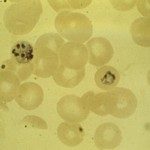Lien vers Pubmed [PMID] – 21795589
Sci Transl Med 2011 Jul;3(93):93ra69
Vaccination with an isolated antigen is frequently not sufficient to elicit a protective immune response. The addition of adjuvants to the antigen can increase the magnitude and breadth of the response generated, but quantification of this increase as a function of adjuvant has been intractable. We have directly determined the variation of the immunoglobulin G variable-chain repertoire of an entire organism as a function of vaccination. Using the well-established Plasmodium vivax antigen, PvRII, and massively parallel sequencing, we showed that the use of a Toll-like receptor (TLR) agonist in the vaccine formulation increased the diversity of the variable region sequences in comparison to the use of an oil-in-water emulsion adjuvant alone. Moreover, increased variable domain diversity in response to the use of TLR agonist-based adjuvants correlated with improved antigen neutralization. The use of TLR agonists also broadened the range of polymorphic variants against which these antibodies could be effective. In addition, a peptide microarray demonstrated that inclusion of adjuvants changed the profile of linear epitopes from PvRII that were recognized by serum from immunized animals. The results of these studies have broad implications for vaccine design–they may enable tailored adjuvants that elicit the broad spectrum of antibodies required to neutralize drifted and polymorphic pathogen strains as well as provide a method for rapid determination of correlates of adjuvant-induced humoral immunity.
